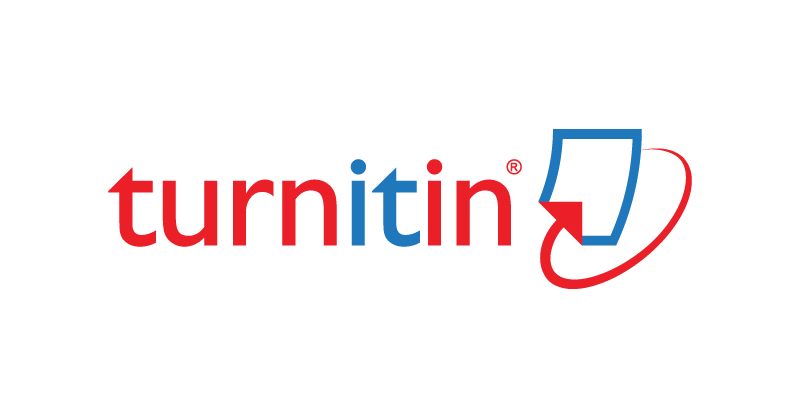Author Guidelines
AUTHOR GUIDELINES
FORMAT
Articles should consist of the following sections: Introduction, Method, Results and Discussion, Conclusion, and References.
- Written on A4 paper size with 1pt font size and single-line space, first line indent 1.5 cm.
- Articles should be a minimum 5000 words, excluding references.
- Authors are encouraged to use reference management software such as Mendeley, EndNote, or Zotero for citation and referencing.
- Our citation and bibliographical style follow American Psychological Association (APA) 7th edition
- JATI accepts manuscripts in Indonesian and English. Please, make sure that the language is used in a correct manner.
- Manuscripts must follow our template, which can be downloaded here (English and Bahasa Indonesia).
WRITING GUIDELINES:
Please refer to Journal Template for detail writing guidelines.
Title
Write the title briefly (no more than 15 words is recommended) and clearly. The title of the article should be concise, interesting and describe the content of the article.
Author Affiliation
The author's name is completed with the name, faculty, university, and country of the institution. Author should mention the correspondence email.
Abstract
Abstract is written in English and Indonesian, which describes purpose, methods, main findings, implication, and originality (please follow our journal template). In the abstract, there should be no statistical figures or citations. The entire abstracts consists of 150 - 200 words. The abstract consists of 3-5 keywords to figure out the basic concept in the fields of study.
Introduction
The Introduction section describes the research background in general (max 2 paragraphs), State of the Art, Novelty, Gap Analysis, Objectives, and Research Implications. The State of the Art statement provides a concise summary of the most recent empirical literature (from the last 5 to 10 years), using primary literature as a point of comparison, so that it can be used to justify the novelty of the research being conducted. The narrative of the Gap Analysis is based on the description of the State of the Art, which explains the necessity and rationale of research in comparison to earlier studies. In the end of introduction, authors are required to state the objectives and implications of the research.
For quantitative research, authors should also explain hypothetical development in this section. Authors could deliver theory and literature review to explain the relationships between variables and develop research hypotheses. Authors could clearly state the hypotheses statement in this section.
Method
The methods section explains research designs, conceptual framework/research model, data collection method (population, sample, informant or research subject), and data analysis techniques. Authors could describe the research model in terms of the conceptual framework, if necessary, using figure illustrations. Authors should not need to describe in detail the concepts or terms commonly used in research methods.
For quantitative research, authors could describe its measurement and definition of variables in this section. When explaining mathematical or statistical equations, please use the equation feature in spreadsheet applications, followed by a number, as an example below. The description of the equation is narrated in paragraph form, not pointers.
Y = α + β1X1 + β2X2 + β3X3 + β4X4 + ε ………………………...……………………………(1)
(x+a)n=k=0n(nk)xkan-k ……………………..……..….…………………………...…....(2)
Results and Discussion
Authors present the findings in this section, followed by discussion of the findings. Authors could present the discussion after interpreting the research results. The discussion is a logical argument that links or contrasts the theory and empirical literature from the theoretical review. Research findings should be able to answer research questions and hypotheses.
The following components should be covered in discussion: (a) How do your results relate to the original question or objectives outlined in the Introduction section? What is your finding of research? (what/how)? (b) Do you provide interpretation scientifically for each of your results or findings presented? This scientific interpretation must be supported by valid analysis and characterization? (why)? (c) Are your results consistent with what other investigators have reported (what else)? Or are there any differences? Comparison your results with other researcher results is required.
For quantitative research, discussion should be separated from results using distinct subheadings and/or sub-subheading. The results are not raw statistical data or output, but rather test results that have been analyzed using specific procedures by the author. We suggest presenting the results in the form of tables or images. In addition to describing the data shown in the table, authors should also provide the meaning of the presented research results. The results of tests that are commonly carried out, such as the classic assumption test, do not need to be presented, just describe it narratively.
Figures and Table Guideline
Figures should be attached within the manuscript, not as attachments. Each figure is assigned a serial number and a title that describes its content. For example: Figure 1, Figure 2, etc. The title is centered and boldly positioned below the figure. Author should write the source of the figure below the figure title. Authors do not need to put a source of figures and tables, if they are produced by authors themselves. Charts and tables may not be presented in the form of screenshots.
Table is attached within the manuscript, not as an attachment. Each table is assigned a serial number and a title that describes its contents. For example: Table 1, Table 2, etc. The titles are centered and bold above the table, with no vertical lines. When referencing other sources, sources are placed under the Table. Authors do not need to put a source of figures and tables, if they are produced by authors themselves. Avoid prepositions when describing Tables or Figures, such as "It can be seen in Table 1 below" or "Figure 2 above shows...". The table should be written in one page, with no page breaks. Charts and tables should not be presented as screenshot.
Conclusion
Author states the conclusion of the research in paragraphs, not in numerical format. In conclusion, citations are unnecessary. The author may also include research limitations and direction of future research.
Statement of Competing Interest
This section is used to declare any financial, personal, or professional conflicts of interest that may influence the research, analysis, or conclusions presented in the manuscript. Authors must disclose any affiliations, funding sources, or relationships that could potentially bias the work. If there are no competing interests, a clear statement confirming this should also be provided (e.g., "The authors declare no competing interests."). This ensures transparency and upholds the integrity of the research.
Acknowledgements
This section is given to the author to express his gratitude to both the research funders and institutions who have contributed to the realization of the research.
References
The bibliography only contains sources cited in the manuscript. It should be arranged alphabetically according to the author's last name.. The bibliography style refers to the APA 7th edition style. Authors are suggested to use reference management software such as Mendeley/Endnote, etc. The bibliography is recommended to have 80% of citation sources from the last 5-10 years, from primary libraries. The number of citations and bibliographies is at least 20 references. Avoid using sources from websites, student final assignments. The bibliography is written in Cambria font, 11 pt, single-space, and 1cm hanging line indent.
CITATION AND REFERENCING STYLE
Citation
Citations in the text should be enclosed in parentheses and include the author's surname and year, without a comma. Page numbers should be included if necessary.
- Single author: (Syafruddin 2001)
- Two authors: (Habbe and Hartono 2000)
- More than two authors: (Budiono et al. 1999)
- Multiple sources with different authors: (Mardiyah 2001; Kusumawati 1999)
- Multiple sources with the same author: (Djakman 1998, 2000)
- If the citation includes a page number: (Brownell 1981, 845).
For authors with multiple works in the same year, use letters after the year: (Joni 1999a, 1999b) or (Joni 1999a; Daud 2000b). - When the author's name is mentioned in the text, only the year is needed in parentheses: e.g., "Alamsyah (1998) stated..."
Citations from institutional sources should use the institution's acronym: e.g., (IAI 1994).
References
Book
Forouzan, B.A., & Fegan, S.C.. (2007). Data communications and networking, Fourth edition. New York: McGraw-Hill.
Journal (DOI is if any)
With DOI
Coolen-Maturi, T. (2013). Islamic Insurance: Demand and Supply in the UK. International Journal of Islamic and Middle Eastern Finance and Management, 6(2), 87-104. https://doi.org/10.1108/17538391311329806.
Without DOI
Tseng, Y.C., Kuo, S.P., Lee, H.W., & Huang, C.F. (2004). Location tracking in a wireless sensor network by mobile agents and its data fusion strategies. The Computer Journal, 47(4), 448–460. Retrieved from https://ieeexplore.ieee.org/abstract/document/8129953/
Paper published in the proceeding
Ali, S., Green, P., & Roob, A. (2012). The Influence of Top Managements’ Absorptive Capacity of IT Governance Knowledge on Business-IT Alignment: an Empirical Analysis. Paper was presented at the AMCIS 2012 Proceedings, Australia.
Article in Website
Alexander, J., & Tate, M.A. (2001). Evaluating web resources. Retrieved from Widener
University, Wolfgram Memorial Library. Available at: http://www2.widener.edu/Wolfgram-Memorial-Library/webevaluation/webeval.htm
Rule/Regulation
Ministry of Administrative Reform and Bureaucratic Reform. (2012). Minister of Administrative and Bureaucratic Reform Circular Number: 08 / M.PAN-RB / 06/2012 concerning Complaint Handling System (Whistleblower System) Crime Corruption in the Ministry/Institution and Local Government Environment.
NOTES FOR USAGE OF GENERATIVE AI IN SCIENTIFIC WRITING
The following guidance refers only to the writing process, and not to the use of AI tools to analyse and draw insights from data as part of the research process:
- Generative AI and AI-assisted technologies should only be used in the writing process to improve the readability and language of the manuscript
- The technology must be applied with human oversight and control and authors should carefully review and edit the result, as AI can generate authoritative-sounding output that can be incorrect, incomplete or biased.
- Authors are ultimately responsible and accountable for the contents of the work.
- Authors must not list or cite AI and AI-assisted technologies as an author or co-author on the manuscript since authorship implies responsibilities and tasks that can only be attributed to and performed by humans.
- The use of generative AI and AI-assisted technologies in scientific writing must be declared by adding a statement at the end of the manuscript when the paper is first submitted.
- We do not permit the use of Generative AI or AI-assisted tools to create or alter images in submitted manuscripts.
- The use of generative AI or AI-assisted tools in the production of artwork such as for graphical abstracts is not permitted. The use of generative AI in the production of cover art may in some cases be allowed, if the author obtains prior permission from the journal editor and publisher, can demonstrate that all necessary rights have been cleared for the use of the relevant material, and ensures that there is correct content attribution.









